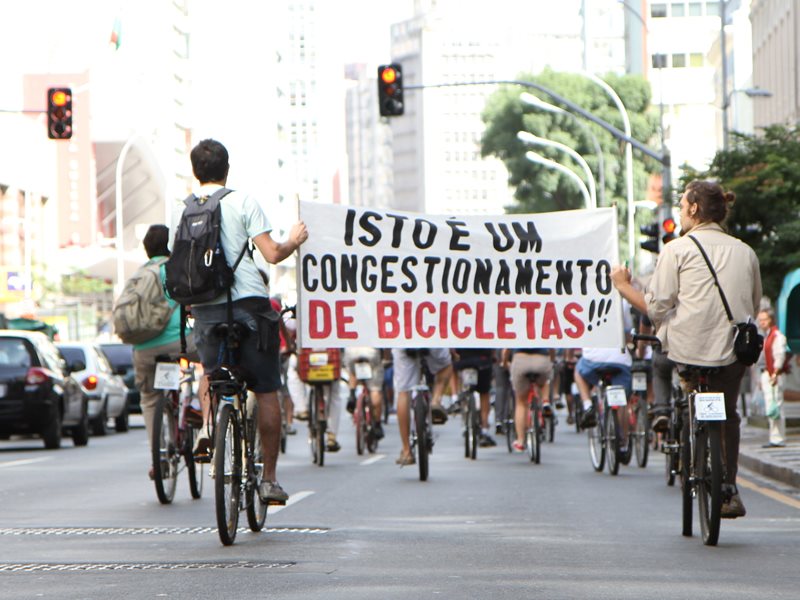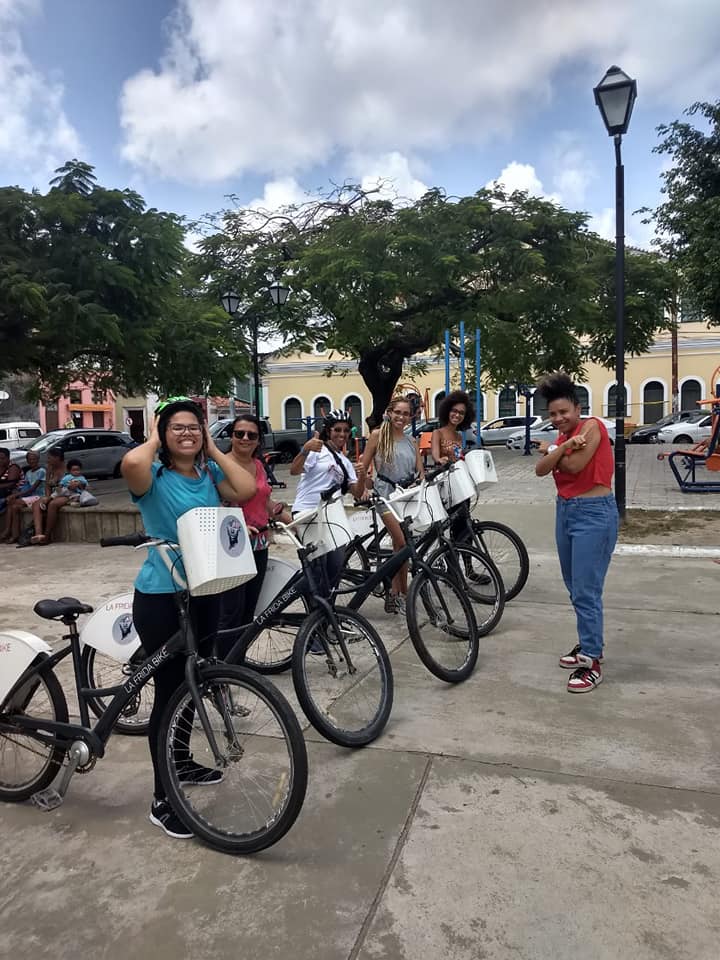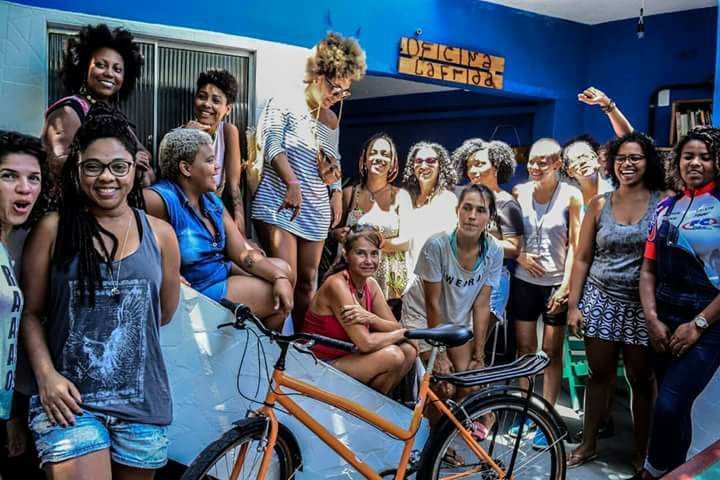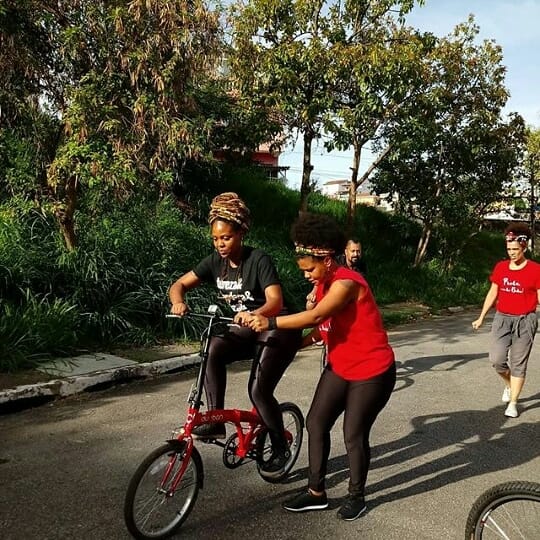Civil society interventions impact urban mobility in northeastern cities
Experiences in the capitals Salvador (BA) and Fortaleza (CE) point to new paths for the development of urban transport.


Image credit: Disclosure
By: Eduarda Nunes / Lupa do Bem – Favela em Pauta
Mobility is one of the biggest challenges of life in big cities. The coming and going, as constitutional rights, becomes an everyday dispute for those who need to carry out any activity outside the home. The disorderly growth of the city, with little planning and a lot of hurry to get it right, are the main reasons given why today we have to deal with this issue.
Salvador (BA) is the first capital of Brazil and the most populous in the northeast. According to estimates by the Brazilian Institute of Geography and Statistics (IBGE), in 2016 almost 2.9 million people lives in the city and 80% of them are black. Even though it is the blackest city in the country, when it comes to urban mobility, very few of them were involved in the conversation.
Who tells this is Lívia Suarez, 34, who in 2015 started the La Frida movement, at the time an itinerant coffee shop. It was during this period that the social entrepreneur started to attend events and movements that think about the mobility of the city. “The big issues in Salvador, everyone will think it’s a slope, the big typographies in the city, but the big issue is that today we have expensive public transport, with little structure, overcrowding, few routes and limited routes to the periphery areas”, she says.
From the perception of exclusion of the peripheral population in this matter, La Frida began to expand. The first project was “Preta, vem de Bike” to teach black women to ride and handle bikes, through professional courses in mechanics and customization. Currently, the movement has its own line of bikes, the Bici Pr3ta, and has developed a sharing system that complements the journey of thousands of people in Salvador daily.
In all, it’s estimated that 2,000 women have already been impacted by these social enterprises directly and more than 20,000 indirectly – considering issues such as employability and references to initiatives for the right to the city.

After almost 6 years of activities, La Frida sees the ramifications and impacts of the initiative in Salvador. “It’s a more inclusive city, isn’t it? We see a new face in the city. Both gender, ethnicity and social class. Today, we see black people on the periphery using the bikes as a means of leisure, transport, and sport”, says Lívia. She also remembers the importance of contacting the public authorities in the implementation of cycle paths and other measures that give less priority to motorized transport, so that everyone can access the city without great difficulties.
Salvador is the third city in the northeast in terms of cycling structure. According to the Institute of Transport and Development Policies (ITDP), the capital of Bahia is second only to Recife (PE) and Fortaleza (CE), which have maintained the position of reference in investments and research in sustainable urban mobility in recent years. The capital of Ceará is a success story of how cooperation between civil society organizations and the government brings improvements in the quality of life.
Following the movement for urban mobility in Fortaleza since 2012, Felipe Alves is a civil engineer, is part of the Association of Urban Cyclists of Fortaleza (Ciclovida) and is on the board of the Union of Cyclists of Brazil (UCB). In an interview with Lupa do Bem, he says that all the movement in the area began in 2013, when the country was on the streets making several demands and on the eve of the World Cup. The municipal government welcomed demands brought by active mobility organizations and created a permanent contact network with them.




Felipe also credits the success of the actions and implementations to the monitoring and use of data that the city hall carries out before and after the executions. Fortaleza has the Traffic Accident Information System (SIAT), a data system that demonstrates the effectiveness of the services.
One of the most expressive results of this cooperation is the city’s 364 km of cycling network, with more than 78 km built during the pandemic. The public authority’s striving to maintain a harmonious accommodation between means of transportation and, for that, it includes activists who were present in the demands at the Secretariat of Transport and Mobility.
In Fortaleza, the bike sharing system, for example, works as an integrated transport system for buses. The widening of sidewalks, the elevation of crosswalks and the new exclusive lanes for buses are some of the factors that led the city to beat the United Nations (UN) goal of reducing traffic deaths by half by the end of the decade (2020). These measures make drivers reduce speed, without necessarily needing reduction signs.


Regarding future expectations of mobility in the city, the engineer and cyclist reflects that “maybe it was time to make a little bigger investment”. “For example, if you can’t solve problems in a place where an overpass was built, why not build a bicycle overpass too?”, he asks.


Although the last eight years have seen many advances, motorized transport is still seen as a priority by management. “You can gain space for other mains of transportation without messing with the cars so as not to be unpopular. But I think you have to change it so you can keep evolving in the other modes because, if you don’t, there comes a time when you can’t evolve”, defends Felipe.




